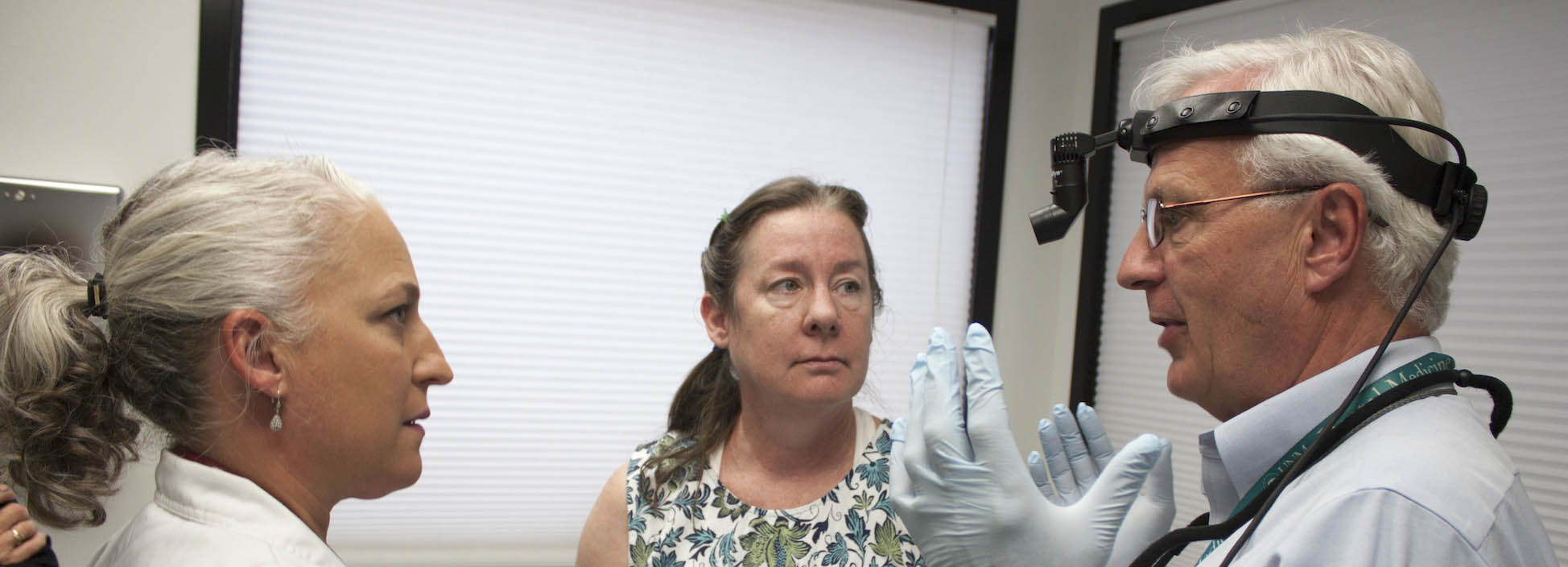It’s every researcher’s dream to uncover something groundbreaking in their field—and to keep building on that discovery. At UNM Health Sciences Center, we are living that dream by developing a novel drug based on the STEP enzyme, which holds potential to become the future of ischemic stroke treatment.
STEP, also known as Ptpn5 (protein tyrosine phosphatase, non-receptor type 5) is a neuron-specific and brain enriched tyrosine phosphatase. The function and future utility of this enzyme has been the focus of study in the Surojit Paul Lab; our work has been funded by the National Institutes of Health since 2005.
Over time, I discovered that STEP provides neuroprotection from acute brain trauma, such as from ischemic (clot-based) stroke. Loss of function of endogenous STEP has devastating effects on stroke outcome. But when STEP function is restored, stroke damage is significantly reduced in animal models.
Today, there are no adequate treatments to reverse damage done from ischemic stroke, which happens when blood flow to an area of the brain stops due to clots in blood vessels and comprise 85% of all strokes. The only chance to prevent long-term brain damage is swift treatment with clot-busting drugs such as TPA or clot removal at a comprehensive stroke center such as UNM Hospital.
Signs of stroke must be immediately recognized and treated to recover mental and physical deficits, which can be challenging for older patients and even young adults, as well as those who live far from the hospital. Many lives are cut short or altered forever due to lack of effective treatment.
But there is hope from the research emerging from our laboratory in Albuquerque.
Our pre-clinical research suggests that a STEP-derived medication developed at UNM Health Sciences Center could provide robust protection against ischemic stroke induced brain damage, even when administered several hours after a stroke occurs.
Validation that STEP Protects the Brain
In my lab, we discovered that rapid activation of endogenous STEP enzyme following ischemic stroke provides initial neuroprotection, while degradation of the active STEP over time leads to loss of its neuroprotective effects, leaving the brain vulnerable to damage through secondary activation of detrimental cascades.
To further study the neuroprotective role of STEP, we removed the STEP gene from mouse to generate a STEP knockout. Genetic deletion of STEP in mice leads to exacerbation of brain injury and neurological deficits following a mild ischemic stroke, which is devastating. This research validates that STEP is involved in neuroprotection of the brain against acute insults.
Translational STEP Data Are Promising
So, I began to question how we could restore STEP and its protective functions to reduce the burden of stroke on the brain—and potentially restore critical motor and cognitive functions lost due to stroke.
At first, we analyzed the function of the various domains of the STEP enzyme. Based on the findings, we identified and modified a small region of the enzyme to develop a STEP-derived recombinant peptide that can:
- Cross the blood-brain barrier
- Resist degradation
- Enter the neurons in the brain
- Be administered via intravenous (IV) injection
This patented STEP-derived therapeutic target has proven to be effective at reducing brain damage from ischemic stroke when given at symptom onset or several hours later in rodent models of stroke.
UNM HSC is home to an animal-exclusive Magnetic Resonance Imaging (MRI) unit, a well-established, non-invasive imaging modality used in clinical practice to assess brain damage in patients with suspected stroke. Evaluation of MRI scans from rodent models of stroke taken 24 hours, two weeks, and four weeks following post-stroke treatment with the STEP-derived peptide show that peptide treatment can reduce the extent of stroke-induced brain injury.
Functional studies further show that treatment with the peptide can improve motor function, sensory function, balance, and memory, all of which can be lost following stroke in humans.
We are now venturing into research using animal models that mimic human risk factors for stroke—specifically hypertension and aging, which render individuals more vulnerable to stroke and increase severity of stroke outcomes. Our goal is to determine how STEP expression and activity changes in these conditions and what effect they have on stroke outcomes.
In both aged and hypertensive animals, we observe significant loss in function of STEP activity in the brain, suggesting that such loss of STEP activity could play a key role in the progression of stroke outcome under these conditions.
Consistent with this hypothesis, the severity of stroke outcome in rodent models of hypertension increases significantly following induction of ischemic stroke, whereas restoration of STEP activity with intravenous administration of the STEP-derived peptide improves stroke outcome by reducing the extent of brain damage and mortality.
Related reading: UNM HSC’s Neurocritical Care Fellowship Receives ACGME Accreditation
Future Research—Including Potential Human Trials
My lab has initiated additional studies to evaluate STEP activity and stroke outcomes in animal models of diabetes, another major risk factor for stroke.
My goal is to eventually go to human clinical trials with this potent neuroprotective drug. There are several regulations to meet first – additional studies using animal models must evaluate potential toxic effects of the drug in other organs prior to any clinical trial.
Stroke is a leading cause of death and disability worldwide. In the U.S., someone suffers a stroke every 40 seconds and someone dies from stroke every 3.5 minutes. Combining healthcare costs and missed days of work, the economic toll of stroke is nearly $53 billion in the U.S.
If our novel drug proves effective in future human trials, there is potential to significantly relieve the personal and financial burdens of stroke—and improve quality of life for thousands of people worldwide.

